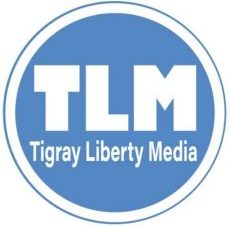[By Yerega]
The Qeerroo movement in Oromia serves as a powerful model of youth-led resistance, effectively combating the exploitation and environmental degradation caused by illegal mining companies across the region. Through coordinated efforts, strategic actions, and community mobilisation, Qeerroo members have successfully dismantled unlawful mining operations by targeting companies engaged in the unchecked extraction of natural resources without permits or regard for environmental and social impacts. This document explores the tactics and achievements of the Qeerroo movement and the potential lessons it offers to Tigrayan youth.
How the Qeerroo Movement Successfully Dismantled Illegal Mining in Oromia?
Targeted Actions and Community Mobilisation
The Qeerroo movement, comprised of young Oromo activists, adopted a highly organized approach that united communities across various districts affected by illegal mining. They systematically identified areas of mining activity, mapped out the companies involved, and mobilized local communities to resist these operations actively.
Destruction of Equipment and Machinery
In a display of determined resistance, Qeerroo activists reportedly engaged in direct actions by dismantling and destroying equipment and machinery used by mining companies. This included burning trucks, bulldozers, and excavators in key mining zones like Guji, Borena, West Wollega, and other areas deeply affected by illegal extraction. The destruction of equipment was a strategic economic tactic to make it costly for these companies to resume operations.
Targeted Mining Areas and Companies
Guji and Borena Zones: These zones, rich in gold deposits, have long been targeted by mining companies. Companies such as MIDROC Gold were reportedly forced out of parts of Oromia after sustained protests and direct action.
West and East Wollega Zones: Known for their mineral wealth, these areas also saw focused Qeerroo action against mining operations.
Arsi and Bale Zones: Illegal mining in these areas prompted decisive action from Qeerroo, who dismantled equipment and drove out miners to prevent further environmental damage.
Focus on Environmental and Social Concerns
Beyond dismantling mining operations, the Qeerroo movement highlighted the severe environmental degradation and socio-economic harm inflicted by these illegal operations. Mining activities led to deforestation, water contamination, soil degradation, and displacement, which disproportionately impacted farmers and indigenous communities reliant on the land. The Qeerroo framed their actions as a means of protecting Oromia’s natural resources and ensuring the well-being of future generations.
Key Lessons for Tigrayan Youth
Tigray, like Oromia, faces challenges from illegal mining that threatens both the environment and the socio-economic stability of its communities. Here are some important lessons from the Qeerroo movement that could inspire similar efforts in Tigray:
Unified Community Mobilization
Tigrayan youth can follow the example of the Qeerroo by building a unified front across the region. Coordinating efforts with local communities, environmental advocates, and regional leaders can rally support against illegal mining. A shared vision for safeguarding Tigray’s resources could empower collective action and foster a stronger, more inclusive movement.
Strategic Targeting of Mining Equipment and Sites
Tigrayan youth may consider a similar approach of disabling the equipment used by illegal miners. This would disrupt the operations of these companies, making it harder for them to continue without incurring major financial losses. However, any direct actions should be undertaken with careful consideration of legal implications and community safety.
Focus on Environmental and Livelihood Preservation
Highlighting the adverse effects of illegal mining on Tigray’s ecosystems and local economies could enhance the movement’s appeal. By framing their actions as essential to protecting the environment and supporting Tigray’s agricultural and water resources, Tigrayan youth can create a moral and community-based foundation for their activities, similar to the Qeerroo’s approach.
Collaboration Across Youth Groups and Communities
The Qeerroo’s success relied on broad-based support from various youth and community groups. Tigrayan youth could adopt a similar approach by working together with student groups, agricultural associations, and regional environmental organizations. Coordinated resistance across Tigray could amplify each action’s impact and establish a widespread movement.
Moving Forward: Building a Movement to Protect Tigray’s Resources
The Qeerroo movement exemplifies how youth-led initiatives can make a substantial impact on combating illegal exploitation. By learning from their tactics, Tigrayan youth can develop a well-structured, community-supported approach to resisting illegal mining. With strong organisational efforts, a focus on environmental protection, and a united regional movement, Tigray’s youth have the potential to preserve and protect their homeland’s resources for future generations, as the Qeerroo have done in Oromia.
